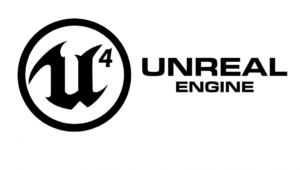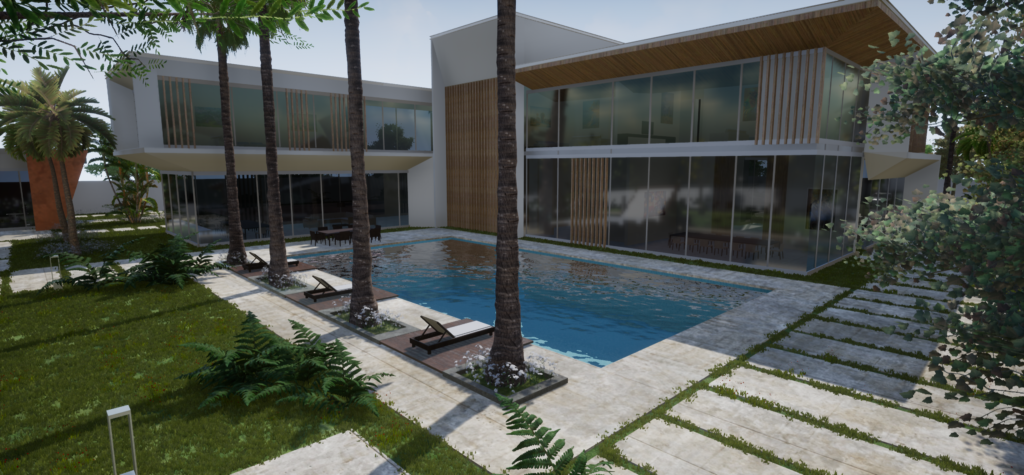ArchViz
What will you learn in this VR course?

Archviz is short for architectural visualization, and it refers to the 3d graphics that are used to visualize architectural projects for the purposes of design communication, marketing, etc. It can involve rendering still images, or computer generated 3d animations. More recently, arch viz artists have started to integrate virtual reality with programs such as Unreal Engine 4. Other professional grade software packages used in the industry include 3dsMax, Vray (render engine plugin), and Photoshop. These each serves a different purpose in the arch viz artists’ workflow. These programs are similar to what is used for creating video games, movie special effects, and other computer graphics. Arch viz is the art of applying these tools, and artistic techniques, to illustrating and animating architecture.
As a student of this program, you’ll be able to learn and create a rich, interactive and highly immersive VR solutions to different industries like (Architecture, Entertainment, Gaming). You will be engaging with dynamic and fun to learn live projects. During this programme, you will become familiar with essential SDKs and APIs of PC and mobile platforms.
Syllabus
Section: 1
In 3ds Max
01 Modeling Considerations
02 Your Scene Is NOT normal. Let’s Fix It
03 Material Considerations
04 UVW Map Considerations
05 FBX Export for Real-Time
Section: 2
In Unreal Engine 4
06 Setting Up A Basic Project Using A Template
07 Basic Navigation in Unreal Engine 4
08 Importing from 3ds Max to Unreal Engine 4
09 What are Collisions? Here is a Breakdown If You Are New To Real Time
Section: 3
Unreal Engine 4: Materials
10 Materials Introduction
11 Unreal Engine Materials and Your First Build
12.A Mirror Reflection Material in UE4
Section: 4
Unreal Engine 4: Lighting
13.Lighting Introduction
14.UE4 Lightmass Settings for Arch Viz + Applying Basic Lights
15.More Lighting and Post-Processing
16.Skylight and More Post-Processing
17.Lighting Fix
Section: 5
Exporting Your Real-Time Project So Others Can View It
18.Exporting Your Project
Section: 6
Using UE4 For a Virtual Reality Headset – Oculus Rift
19.Using The VR Template To Create Your First VR Project for Arch Viz
20.VR Template in Use — Test It Out
21.Converting an Existing FPS Level into VR
22.Testing Out Your Migrated Scene In Virtual Reality Mode
Section: 7
UE4 Blueprint Basics: Adding Interaction To Arch Viz Projects
23.Blueprint Basics in UE4: Level vs Class Blueprints
24.Turn On And Off Lights Using Trigger Events In Blueprints
25.Class Blueprints: Get Your Blueprints Talking To Each Other
26.Changing Materials On Your Objects Dynamically in Real Time
27.Combine Our Scripts Into Our Virtual Reality Scene
Section: 8
PROJECT: Virtual Reality Project From Start To Finish
28.Getting Started With The VR Template in UE4
29.Create Your Own Level From Scratch And Enable VR Navigation
30.Navigate Your Own Game / Architectural Models in Virtual Reality
31.Adding Light to The VR Scene
32.Nav Mesh Settings in UE4 for Virtual Reality With Motion Controllers
33.Lighting Using Self-Illuminated Materials
34.Refining Our Model By Using Reimport Function
35.Simulating Area Lights in Our Scene For Soft Lighting
36.Refine and Adjust Your Project Lighting
37.Intro To Blueprint Terminology
38.Adding VR Interactivity Using Blueprints
39.Blueprint for Interactively Raising And Lowering Screen
40.Blueprint for Turning Lights Up and Down Using Functions
Duration: 24 Working Days
What You Should Have ?
- VR compatible smartphone.
- ( Intel i5 or greater, high-end graphics card )
- Windows (7, 8, or 10) to deploy the VR apps.
What we will provide: HMD ( OCULUS rift, Samsung Gear VR, Google Cardboard), i5 Desktop Pc.
Note: This course does not cover Advanced Scripting in unity with C++ – This course also uses pre-built Scripts for additional functionalities.

